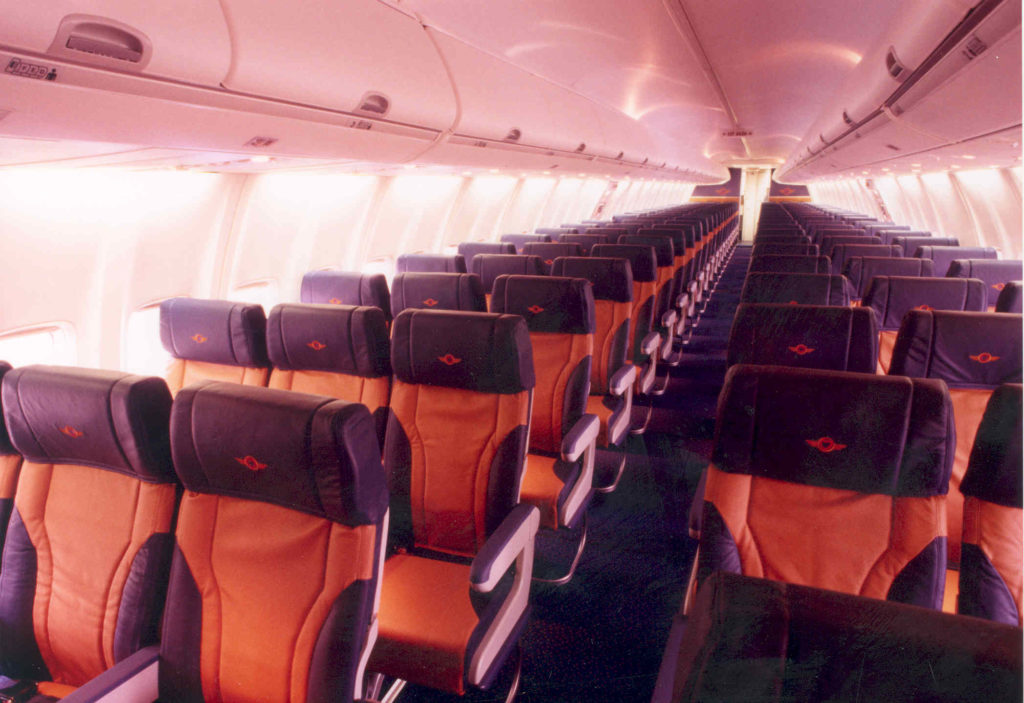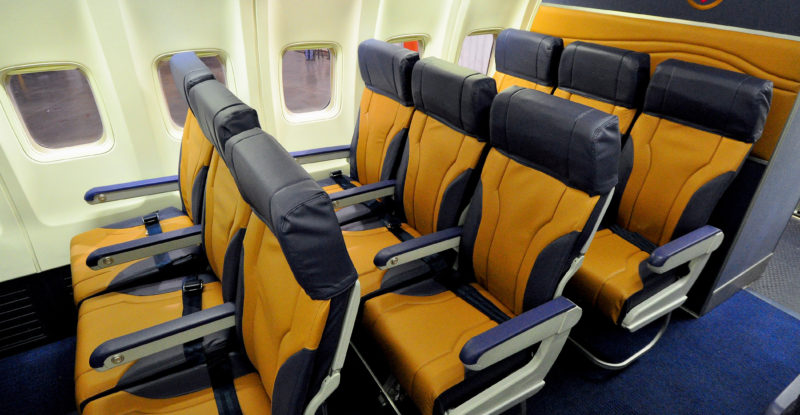 During the 16 years I spent in the manufacturing of aircraft interiors and cabin safety equipment, I learned a lot from many knowledgeable people in the aviation industry, and stumbled on a trick or two when dealing with complications. Runway Girl Network editor Mary Kirby asked me to share some design tips and tricks learned during my career. It was hard to narrow them down. But let’s focus on four essentials: fire, structure, tension and color.
During the 16 years I spent in the manufacturing of aircraft interiors and cabin safety equipment, I learned a lot from many knowledgeable people in the aviation industry, and stumbled on a trick or two when dealing with complications. Runway Girl Network editor Mary Kirby asked me to share some design tips and tricks learned during my career. It was hard to narrow them down. But let’s focus on four essentials: fire, structure, tension and color.
Fire
Fire is first because it is the biggest threat in the aircraft cabin. Finding materials that do not allow fire to propagate is an absolute must, as aviation regulations make clear. But getting new materials – and especially assemblies – to pass flammability testing can be tricky.
One thing I learned early on: you can’t set sheep aflame. I mean, why would you want to? But that’s the way it was explained to me: wool is a natural fire retardant. It self-extinguishes, quickly. Having a high wool content on textiles is good, which is why so many aviation fabrics rely on it, but wool can pill (create a fuzzball). You need a good blend to prevent it from doing so. On an aside, wool also has nice properties for climate control, which is why pilots love sheepskin seats. In this past life of mine, my team and I successfully introduced sheepskin on domestic first class class for American Airlines in the 1990s, but aesthetically it was a bad move. After a while, like a lamb in the field, it became matted and dirty, which is not a good look.
But back to flammability. Another key factor to consider is that the individual properties of materials used in assemblies can actually respond to fire differently than the overall assembly. For example, a foam that passes flammability can be joined to a leather or ultra-leather fabric that also passes flammability using a fire-proof adhesive and the final assembly might still fail flammability tests. The key thing to remember when you want to get creative on assemblies is to leave room in the program schedule for failure and redesign. Never assume you’ll pass on the first or indeed second try. You also want to have a knowledgeable DAR (Designated Airworthiness Representative) around to consult with. Those who specialize in flammability have seen all sorts of materials and composites pass and fail. They might be able to suggest something you haven’t considered.
Structure and Tension
Structure is essential to durability, safety and comfort. Hard structure manufacturers can work miracles to reduce the weight of assembly and improve ergonomics, while ensuring it can meet crash requirements. But people sometimes overlook the opportunities presented by soft structures. What do I mean by that? The way in which you cut and assemble a weave is itself a structure – think of your office chair which consists mainly of webbing.
I remember sitting in the conference room at Southwest Airlines’ headquarters reviewing a beautiful leather seat designed by Teague to be built on B/E Aerospace’s baseline architecture. There were questions about whether we could consistently build something that looked as Teague intended while keeping weight down. We had to create structure using the textiles and the bare frame. We came up with the right solution – and one which could be dressed quickly to boot – by sewing webbing to leather to create the right tension on the back, and a sewn cushion as a joint assembly at the top front which was lowered to hide the web backing. It was all held in place with velcro.

Southwest Airlines’ embroidered logo was originally part of the leather headrests. Image: Southwest Airlines
It’s important to consider the relative tear strengths of materials joined together. For example, I’ve seen unsuccessful combinations of leather and fabric panels that ultimately fray and come apart in service, because leather can withstand more tension than fabric. The Southwest covers worked for heavy use because we were confident of the relative tensile strength of the two materials and the seams.
Color
Lastly, color obviously makes all the difference in design. But as many know, it doesn’t look the same in all materials. Having a Pantone set for any program is basic good practice. But it may be difficult to ensure that, for example, a thread dyes in a matching shade as your textile or plastic by referencing a Pantone shade alone. Sometimes subtle color differences in production can’t be perceived, except under a certain light. But, if the mismatch happens in elements that are in proximity to each other, then the effect can be jarring.
I flatter myself as having a sharp eye for color matching, so I tend to notice when color is off, but there are more reliable tools available in the market to help ensure color consistency. Datacolor, for example, offers SpectraVision to objectively measure hues under different lighting conditions.
It’s also important to be aware of the impact of treatments – like flammability coatings or cleansers – on color and colorfastness. That should be tested upfront, and also be part of standard lot testing during production runs. I recall one program in which we had to switch leather vendors and suddenly found that their blue leather was leaving a shadow. The flammability treatment they used caused the leather dye to bleed. It was a headache trying to identify the problem and fix it.
As interiors programs may be in service for years, with production runs ongoing, it’s critical to ensure that any recently-made interiors assembly that is positioned to replace a damaged assembly matches the color of existing assemblies. Lot testing for color is important. Of course, you’ll always risk some color difference if the material develops a patina over time, as leather does. In those cases, it’s best to change out all assemblies that are next to each other during routine maintenance and to keep a stock of “used but serviceable” assemblies to fill gaps in emergencies.
Related Articles:
- PriestmanGoode details inspiration for Aeroflot A350 interior design
- New aircraft seatback concept supports passenger ‘micro-nesting’
- HNA Dream Feather concept brings elegant continuity to national brand
- Flying hygge: designing cosiness in the air
- Interior carpet and fabric innovations fly under the radar
- Tapping into real and “perceived” value with seat covers
- Style & Design’s Moments seat poses fascinating questions
- Mirus’ new internal RWorks team highlights design’s importance
- Developing new products for aviation? Get on board
- Flam testing? Know the law











